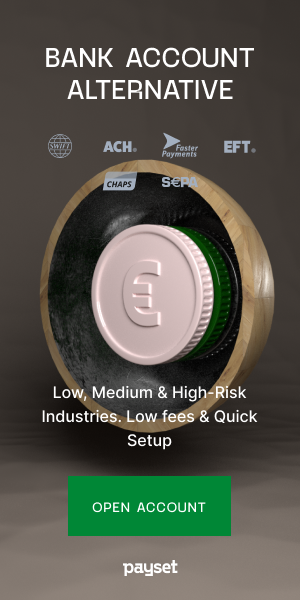A survey conducted by The World Economic Forum in 2017 provided the surprising forward guidance that we can expect up to 10% of global gross domestic products to be held on Blockchain by 2025. For that to happen Blockchain technology would have to replace vast swathes of legacy systems currently being used across finance, government, business and public records in under a decade. Supporting the scale of the overhaul that would involve is the Harvard Business Review’s suggestion that Blockchain "has the potential to create new foundations for our economic and social systems."
The two qualities of Blockchain that have the technology world in such rapture are linked. The first is the decentralized system’s efficiency. The fact that Blockchain applications remove the need for intermediaries to provide trust means it can make many processes cheaper and more efficient. The most obvious examples are in sending payments and banking. The second is that Blockchain is intrinsically a very secure technology. It’s decentralized nature and cryptographic algorithm make it immune to attack. In fact, hacking a Blockchain is close to impossible. In a world where cyber security has become a key issue for personal, corporate, and national security, Blockchain is a potentially revolutionary technology.
Why Blockchain Cannot Be Hacked
Blockchain technology is, in fact, a group of different technologies that can be used together in different ways to create different end results or applications. It’s open code and can be infinitely customized. While the details will vary between Blockchain protocols, the core of the technology is that it is a decentralized digital ledger of transactions. These transactions are verified in whatever way is deemed appropriate for the particular Blockchain application. This is most commonly achieved by either a ‘proof of work’ or ‘proof of stake’ process.
At regular intervals, bunches of verified transactions are grouped together and cryptographically sealed in a data ‘block’. This is done using ‘hashing’. Hashing converts the data into a string of symbols of a defined length. It is almost impossible to reverse engineer this hash back into the original data, making the transactions immutable. New transactions contain the ‘stamp’ of each data block in the prior history of the Blockchain, which is required to verify the current holder of an asset. Assets are transferred by authenticating the transaction history leading up to the present ownership.
In order to change the historical transaction history held by the Blockchain ledger, someone wishing to do so would have to somehow reverse engineer the hash of a sealed block. However, making a change would lead to a different hash output once the block was resealed. This new hash would then be out of sync with the ‘stamps’ running through the rest of the chain, alerting the system, which would reject the resealed block.
Blockchain transaction ledgers are also decentralized, which means copies exist on numerous ‘nodes’. Nodes are computers participating in a particular Blockchain application. In the case of public Blockchains such as cryptocurrencies, the number of nodes can reach millions. For a change to be made to a Blockchain, at least 51% of the participating nodes must verify it. For new transactions, this means that 51% of the network must be satisfied the verification criteria have been met ie. the rightful owner is making the transfer. In the case of Bitcoin, the sender must present a private key, signifying ownership, and a public key, which represents the ‘address’ of the digital wallet the Bitcoin is held in.
Once a transaction has already been sealed into a block and added to the Blockchain, changing it is close to impossible. Not only would it be necessary to reverse engineer the hashed block and make a change to the transaction data contained within but this would have to be done simultaneously over at least 51% of the copies of the ledger held on different nodes. This is why it is practically impossible to ‘hack’ a Blockchain. While it is not theoretically impossible to reverse engineer a hashed block, the number of permutations a processor would need to go through to do so is mind-boggling. This is even before taking into consideration that more than 51% of the nodes would also need to be hacked simultaneously and the new block inserted into each. And if it wasn’t the last block in the chain all those predating it would also have to be unhashed and replaced to prevent the historical ‘stamps’ not being thrown out of sync. This would take a level of quantum computing power that currently exists only in theory.
If Blockchain Cannot Be Hacked then Why do Bitcoin and Ethereum Keep Getting Hacked?
In fact, neither Bitcoin nor Ethereum have ever been hacked. Both Blockchains have remained absolutely secure and are, due to the qualities explained, almost certain to remain so. What many people confuse with Bitcoin or Ethereum being hacked is actually cryptocurrency exchanges or online wallets being hacked. If a hacker gains access to Bitcoin or Ether held on an exchange or wallets, and also the keys necessary to facilitate a transaction, they can steal them, transferring them into an offline wallet to avoid subsequently being traced. There is the additional complication that it is possible to register a Bitcoin address that has no links to the holder’s real-world identity. However, this is a potential criticism of the cryptocurrency system and not related to the security of the Blockchain technology itself.
Selling or buying something with stolen Bitcoin or Ethereum is difficult because if the Blockchain has been notified these units have been stolen normal transactions over the network won’t be possible. However, they can be potentially ‘cashed out’ through various ‘laundering’ processes, usually offline. If a future ‘owner’ then tries to spend or transfer these stolen cryptocurrency units through a normal online transaction they will be flagged as stolen. However, as would be the case with fiat currency, if the current owner can show they paid for the cryptocurrency in good faith, they will not be held responsible for the theft or automatically relieved of their asset.
So..is Blockchain Safe?
In a word, yes. It has not been termed ‘the trust protocol’ for nothing. It is precisely because the decentralized digital ledger of Blockchain is so strongly immutable that makes it such a potentially world-changing technology.


